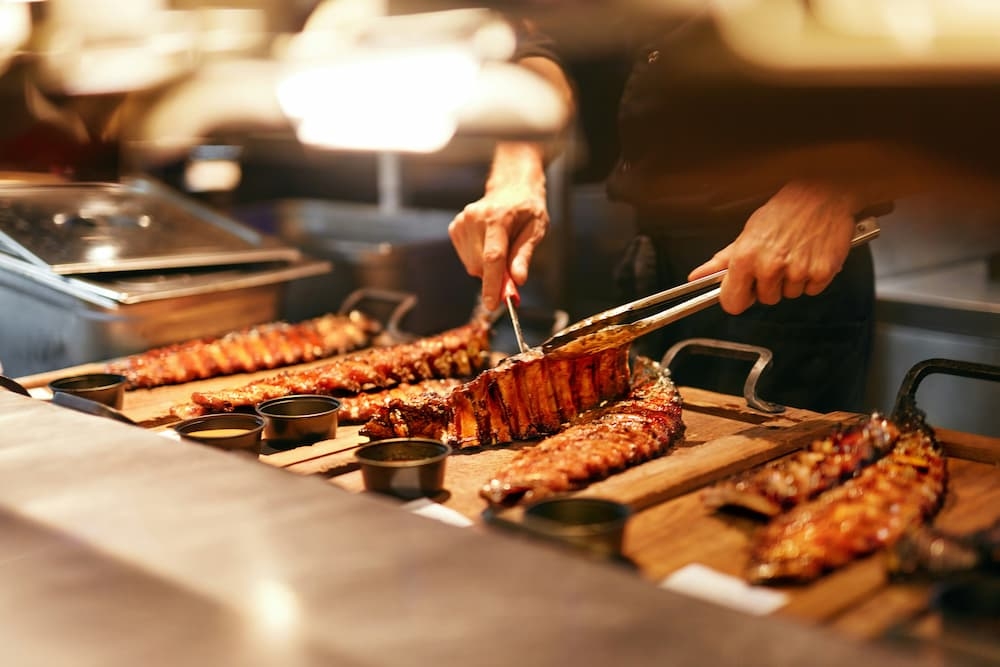The potential for a 2025 food shortage and its impact on food businesses
Table of Contents
CloudKitchens
How many tacos can be delivered from a 1000sqft restaurant?
The same amount as a 200sqft ghost kitchen.
Recent studies and industry reports have raised concerns about a possible food shortage in 2025, fueled by factors like climate change, inflation, global supply chain disruptions, and population growth.
For restaurant owners and food industry professionals, understanding these risks is crucial, as a food shortage could impact everything from ingredient availability and costs to customer satisfaction.
This article explores why these shortages may occur, how they could impact the restaurant industry, and practical strategies food businesses can adapt to remain resilient.
Is the US Experiencing a Food Shortage Crisis?
Since the pandemic, food banks across the United States, which serve the nation’s most vulnerable population, have struggled with increased demand. A significant portion of this surge is due to food inflation, which has accumulated 28% over the past five years.
Food banks assisted around 50 million Americans in 2023. However, with recent cuts and limitations imposed on SNAP (Supplemental Nutrition Assistance Program), more people are likely to turn to food banks for support.
Currently, there isn’t a widespread food shortage crisis. Nevertheless, the combination of these factors with climate crises (affecting food harvests) and the reorganization of international trade chains could put further pressure on inflation, leading more families to experience this type of problem.
How a 2025 food shortage could affect the restaurant industry
1. Increased costs
The potential shortage could lead to price hikes for key ingredients, such as grains, proteins, and produce. For restaurants, this means higher expenses and tighter margins. Rising prices for staple items could force many operators to rethink their menu pricing or absorb some of these costs, which can be a delicate balancing act in a competitive industry.
2. Menu adaptations
If certain ingredients become scarce, restaurants may have to adjust their menus. For example, if meat prices spike, a restaurant could pivot to more plant-based options. Similarly, if fresh produce is limited, operators may explore creative substitutions, use more frozen or preserved items, or design seasonal menus based on local availability.
3. Operational challenges
Food shortages can lead to delays and disruptions in the supply chain, making it difficult to maintain a consistent inventory. Restaurants might experience more frequent stockouts, which can result in unexpected menu changes or limit popular offerings. To navigate this, operators will need to enhance their sourcing strategies and inventory planning.
4. Impact on customer experience
Customers may notice the changes, from limited menu choices to higher prices. Inconsistent availability of menu items could impact customer satisfaction and loyalty, so clear communication and transparency about the situation can help manage expectations.
Read More: Innovative restaurant technology trends
Strategies for restaurants to prepare for food supply challenges
1. Build a diverse supplier network
When restaurants rely heavily on one or two suppliers, any disruption, whether due to weather events, logistics issues, or price changes, can have a significant impact. To reduce this vulnerability, consider expanding your supplier network to include a mix of local, regional, and national providers.
Local suppliers, for instance, might offer more stable sourcing for certain items, and regional suppliers could help bridge gaps during broader disruptions. Establishing these relationships can increase your resilience, offering more options if primary suppliers face difficulties.
2. Adopt a flexible menu design
A flexible, adaptable menu design can make a major difference in times of supply challenges. Try to focus on using versatile, easily substitutable ingredients that allow for “modular” dishes. For example, a base dish like pasta or grain bowls can be customized with a variety of seasonal or available proteins, vegetables, and toppings.
This flexibility means you can pivot based on what’s in stock without compromising on quality or consistency. Menu adjustments based on available inventory can also reduce food waste, keep ingredient costs in check, and help meet customer demand.
3. Prioritize local and seasonal ingredients
Local and seasonal ingredients can be both more affordable and sustainable options, as they typically have shorter supply chains and can be less affected by global disruptions. Sourcing local produce, proteins, and specialty items not only supports nearby suppliers but also enhances your restaurant’s sustainability efforts.
Consider featuring seasonal specials or a rotating menu that highlights locally available ingredients, reducing the need for imported items. This approach helps manage costs and provides your customers with fresher, high-quality options.
4. Increase inventory planning
Effective inventory planning is crucial to preparing for supply challenges. By accurately forecasting ingredient needs based on past data, restaurants can avoid over-ordering or under-ordering key items. Consider using inventory management software to track ingredient usage, monitor stock levels, and identify seasonal fluctuations in demand.
Where possible, build a small buffer of essential non-perishable or slow-to-expire ingredients to cushion against unexpected shortages. It’s important to balance this buffer with waste-reduction practices to ensure freshness and minimize spoilage.
5. Train your staff on flexible operations
Training staff to handle supply changes can make your restaurant more resilient. Teach kitchen staff how to adapt recipes, substitute ingredients, and communicate menu changes to customers effectively. Staff awareness of inventory and flexibility with ingredients enables your restaurant to pivot quickly when supply issues arise.
6. Develop a contingency plan
A contingency plan outlines steps to take in case of major supply chain disruptions. This could include predetermined adjustments to your menu, communication strategies for customers, or fallback supplier options.
Read More: Restaurant Marketing: The Ultimate Guide
Why ghost kitchens and delivery-only models are well-positioned to adapt in some food shortage
Ghost kitchens, which operate without a traditional dine-in option, have a unique advantage in navigating food supply challenges. Their lean, flexible model allows them to adjust menu items based on ingredient availability quickly and without impacting a dine-in customer experience. See how ghost kitchens are positioned to handle potential food shortages:
- Streamlined operations: Ghost kitchens often have simplified menus, which means fewer ingredients and less complexity in sourcing. This allows for quick adjustments based on what’s available.
- Lower overheads: With reduced costs compared to traditional restaurants, ghost kitchens have more financial flexibility to navigate rising ingredient costs.
- Adaptable menus: Ghost kitchens can more easily pivot to meet demand for popular menu items, changing offerings as necessary to stay profitable and minimize waste.
Count with CloudKitchens to grow your food business!
At CloudKitchens, we understand that adaptability is essential, especially in uncertain times. Our ghost kitchen model provides the flexibility and operational support that food businesses need to navigate potential shortages and supply chain challenges.
If you’re looking to build a resilient food business that can withstand potential supply challenges, CloudKitchens offers a flexible, data-driven, and cost-effective solution to help you thrive. Learn more about CloudKitchens and see how we can support your restaurant’s growth!
DISCLAIMER: This information is provided for general informational purposes only and the content does not constitute an endorsement. CloudKitchens does not warrant the accuracy or completeness of any information, text, images/graphics, links, or other content contained within the blog content. We recommend that you consult with financial, legal, and business professionals for advice specific to your situation.
Read more:
- Launch your Virtual Restaurant: A complete guide to success
- Starting a Pop-up Restaurant: A Comprehensive Guide
- Essential tips for safe and efficient food storage in your kitchen
- Waste Management: best strategies for your restaurant
- Mastering demand management: Strategies for handling peak delivery periods
More insights & stories
There’s more where that came from.
Get in the know and check out our additional insights


